Year 7
The proficiency strands understanding, fluency, problem-solving and reasoning are an integral part of mathematics content across the three content strands: number and algebra, measurement and geometry, and statistics and probability. The proficiencies reinforce the significance of working mathematically within the content and describe how the content is explored or developed. They provide the language to build in the developmental aspects of the learning of mathematics. The achievement standards reflect the content and encompass the proficiencies.
At this year level:
- understanding includes describing patterns in uses of indices with whole numbers, recognising equivalences between fractions, decimals, percentages and ratios, plotting points on the Cartesian plane, identifying angles formed by a transversal crossing a pair of lines, and connecting the laws and properties of numbers to algebraic terms and expressions
- fluency includes calculating accurately with integers, representing fractions and decimals in various ways, investigating best buys, finding measures of central tendency and calculating areas of shapes and volumes of prisms
- problem-solving includes formulating and solving authentic problems using numbers and measurements, working with transformations and identifying symmetry, calculating angles and interpreting sets of data collected through chance experiments
- reasoning includes applying the number laws to calculations, applying known geometric facts to draw conclusions about shapes, applying an understanding of ratio and interpreting data displays.
(source: www.australiancurriculum.edu.au)
Achievement Standard
By the end of Year 7, students solve problems involving the comparison, addition and subtraction of integers. They make the connections between whole numbers and index notation and the relationship between perfect squares and square roots. They solve problems involving percentages and all four operations with fractions and decimals. They compare the cost of items to make financial decisions. Students represent numbers using variables. They connect the laws and properties for numbers to algebra. They interpret simple linear representations and model authentic information. Students describe different views of three-dimensional objects. They represent transformations in the Cartesian plane. They solve simple numerical problems involving angles formed by a transversal crossing two lines. Students identify issues involving the collection of continuous data. They describe the relationship between the median and mean in data displays.
Students use fractions, decimals and percentages, and their equivalences. They express one quantity as a fraction or percentage of another. Students solve simple linear equations and evaluate algebraic expressions after numerical substitution. They assign ordered pairs to given points on the Cartesian plane. Students use formulas for the area and perimeter of rectangles and calculate volumes of rectangular prisms. Students classify triangles and quadrilaterals. They name the types of angles formed by a transversal crossing parallel line. Students determine the sample space for simple experiments with equally likely outcomes and assign probabilities to those outcomes. They calculate mean, mode, median and range for data sets. They construct stem-and-leaf plots and dot-plots.
(source: www.australiancurriculum.edu.au)
- Plus Plan
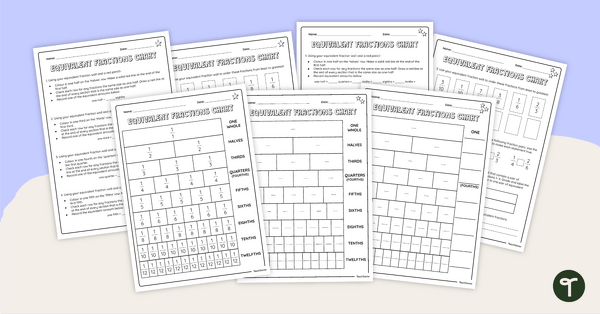
Equivalent Fractions Chart – Differentiated Worksheets
Use a fraction wall to practise finding equivalent fractions and comparing fractions with this set of differentiated worksheets.
- Plus Plan
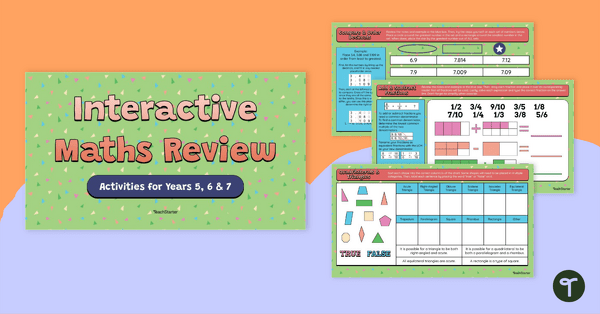
Interactive Maths Review – Activities for Years 5, 6 and 7
Review important maths concepts covered in years 5, 6 and 7 with a student-led interactive activity.
- Plus Plan

Adding and Subtracting Fractions Worksheets
Three worksheets to use when teaching your students how to add and subtract fractions.
- Plus Plan
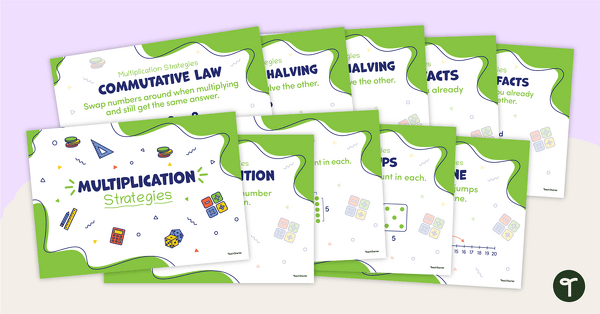
Multiplication Strategies – Classroom Poster Pack
Use this set of posters when teaching different multiplication strategies.
- Plus Plan
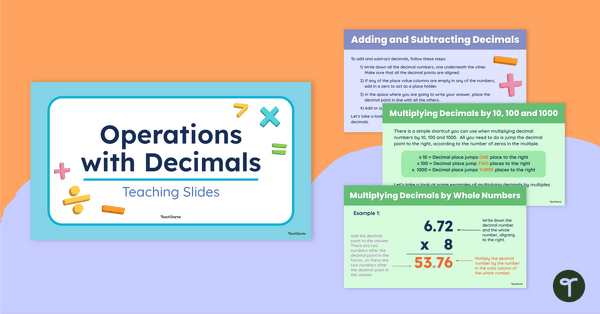
Operations with Decimals Teaching Slides
Teach your students how to add, subtract, multiply and divide using decimal numbers with this comprehensive teaching presentation perfect for upper primary maths lessons.
- Plus Plan
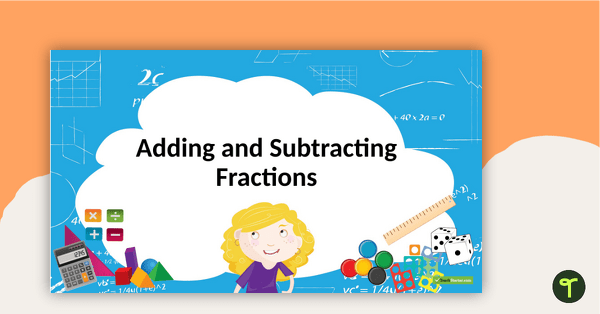
Adding and Subtracting Fractions PowerPoint
A 17 slide editable PowerPoint Template to use when teaching your students how to add and subtract fractions.
- Plus Plan
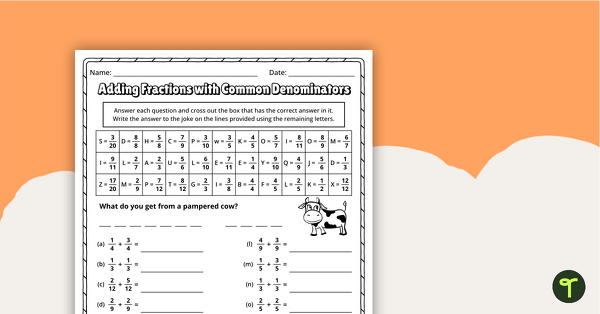
Adding Fractions with Common Denominators Worksheet
A worksheet using fractions with common denominators.
- Plus Plan
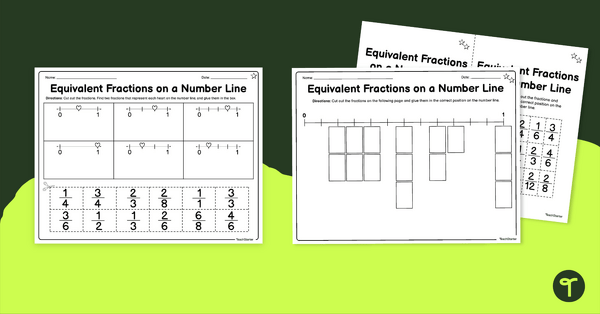
Equivalent Fractions on a Number Line – Differentiated Worksheets
Practise placing equivalent fractions on a number line with this cut-and-paste worksheet.
- Plus Plan
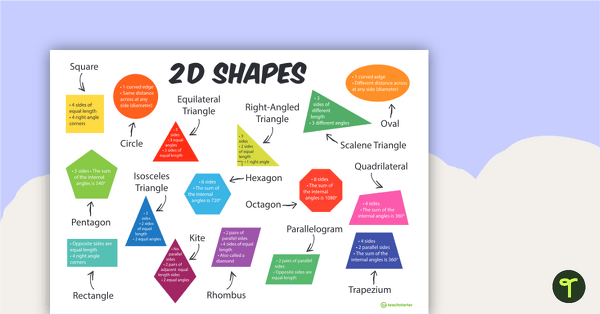
2D Shapes with Information – Poster
A 2D shapes poster with 16 common shapes, as well as information characterising each shape.
- Plus Plan
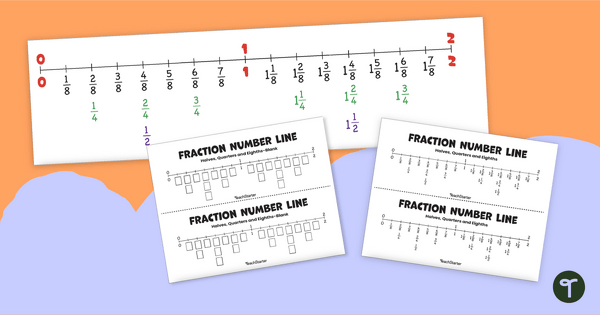
Fractions Number Line - Halves, Quarters and Eighths
Demonstrate the concept of fractions on a number line with a printable number line display and student reference sheets.
- Free Plan
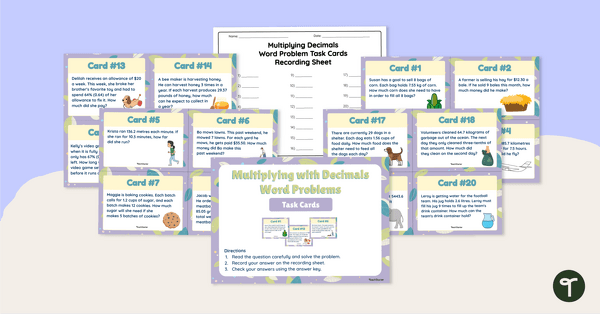
Multiplying Decimals – Word Problem Task Cards
Solve a variety of word problems by multiplying decimals with this set of 24 task cards.
- Free Plan
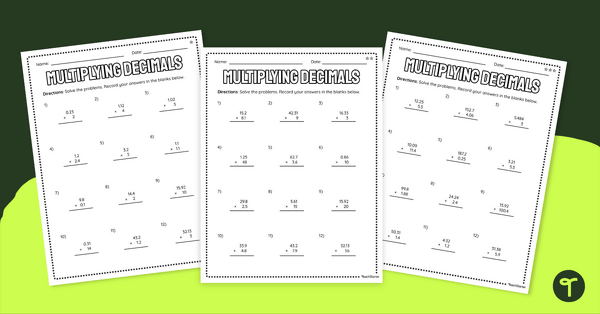
Multiplying with Decimals – Differentiated Worksheets
Strengthen computation skills with this set of decimal multiplication worksheets.
- Plus Plan
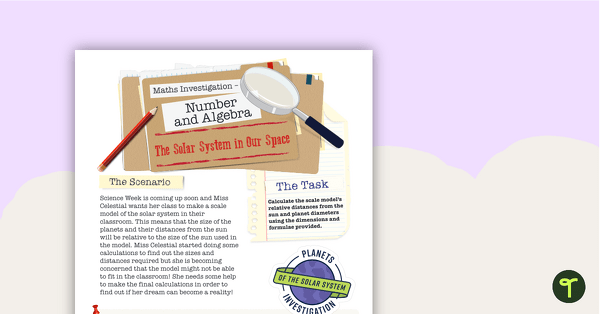
The Solar System in Our Space — Mathematics Investigation
A mathematics investigation about number and the scale of the solar system, embedded in a real-world context.
- Plus Plan
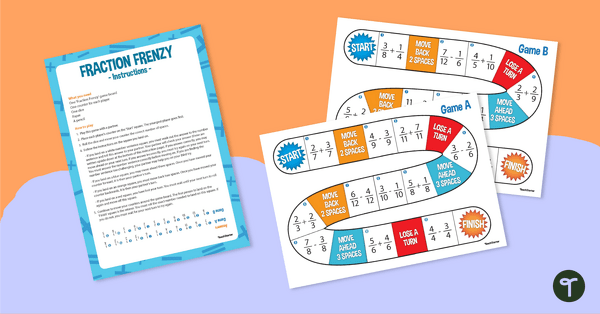
Add & Subtract Fractions Board Game
A board game to consolidate students' understanding of adding and subtracting fractions.
- Plus Plan
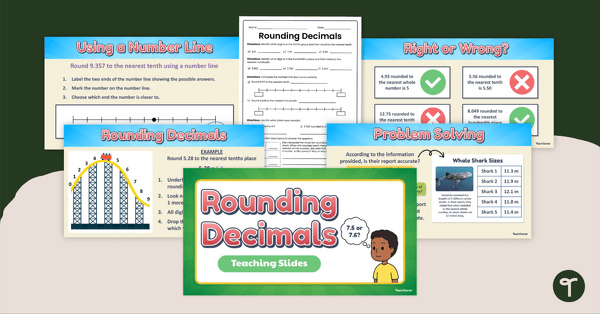
Rounding Numbers With Decimals Teaching Slides and Worksheet
Teach your students how to round to the nearest whole number, tenth and hundredth with this set of teaching slides and accompanying worksheet.
- Free Plan
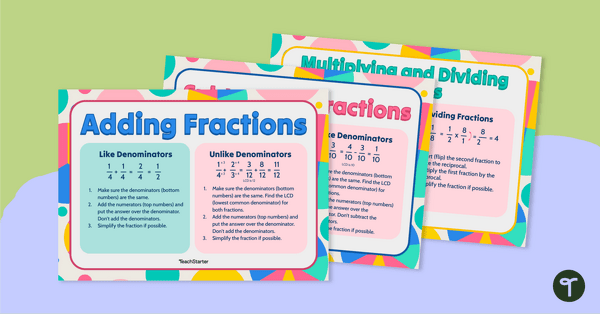
Adding, Subtracting, Multiplying and Dividing Fractions Posters
Posters outlining the processes involved when adding, subtracting, multiplying and dividing fractions.
- Plus Plan
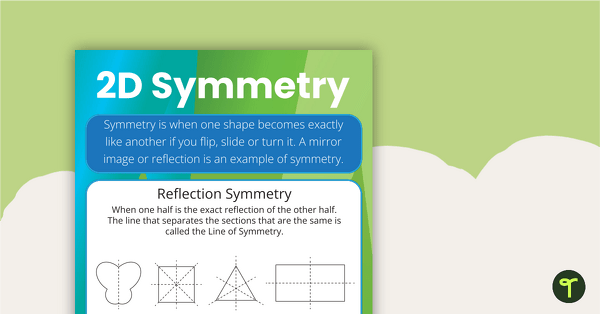
2D Symmetry Poster - Reflection and Rotational
This 2D symmetry poster explores both reflection and rotational symmetry.
- Plus Plan
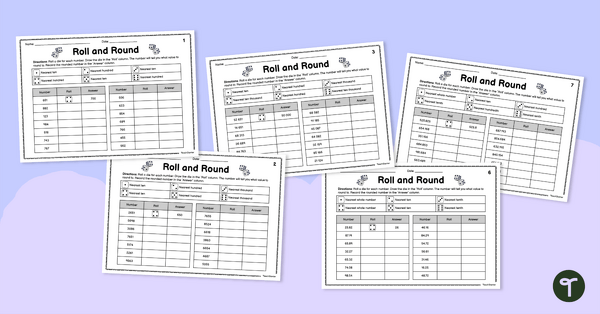
Roll and Round Dice Game Set of 7 Rounding Games
Help your student refine their rounding skills with this set of 7 printable maths games.
- Plus Plan
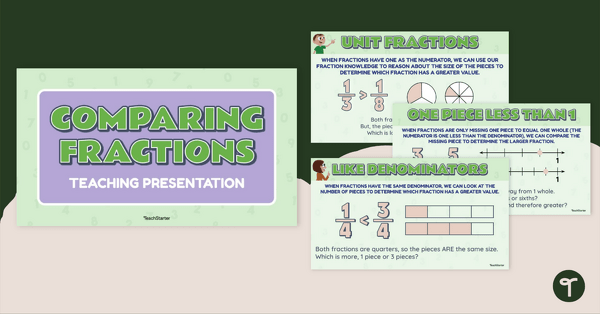
Comparing Fractions – Teaching Presentation
Teach your students about comparing fractions with like numerators or denominators by means of visual models, number lines and mathematical reasoning.
- Plus Plan
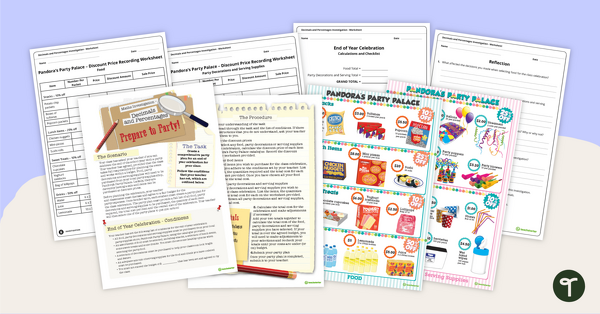
Decimals and Percentages Maths Investigation – Plan a Party!
Get your students connecting their maths knowledge to the real world with this decimals and percentages party planning project.
- Free Plan
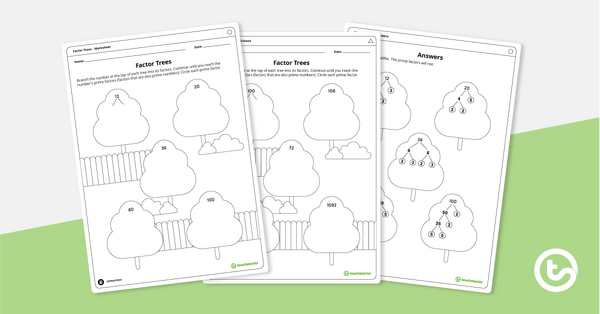
Factor Trees – Worksheet
Find the prime factors of numbers using factor trees with this worksheet.
- Plus Plan

Mean, Median, Mode and Range Posters
Working with data is easy... when you can remember what each of the terms mean!
- Plus Plan
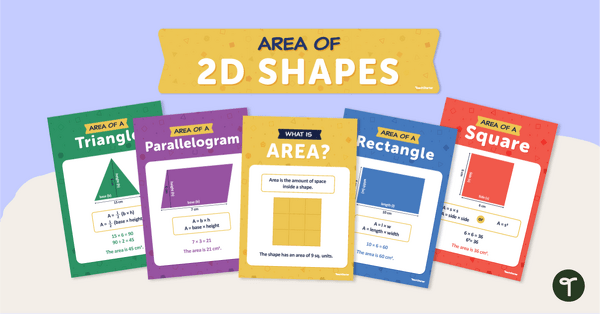
Area of 2D Shapes Posters
Area of 2D Shapes - so many rules and formulas to remember!
- Plus Plan
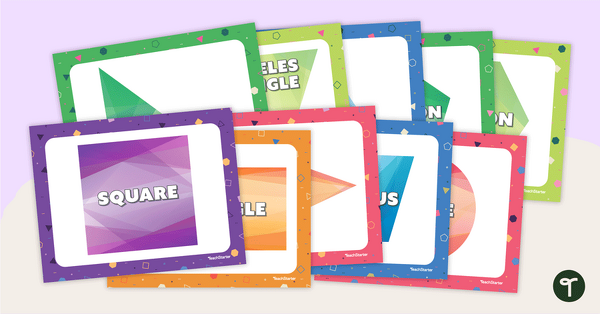
2D Shape Poster Set
Use this set of 16 brightly coloured 2D shapes with your geometry lessons.
- Plus Plan
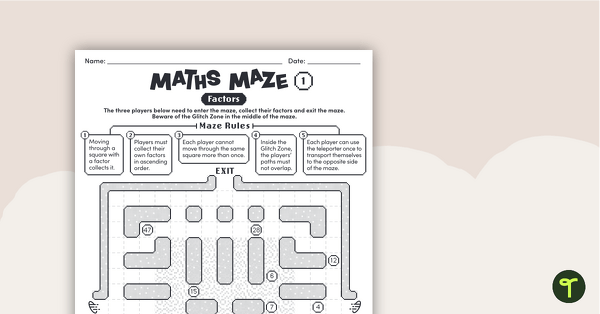
Maths Mazes (Factors)
A set of maths mazes that allow students to demonstrate their knowledge of factors.
- Plus Plan
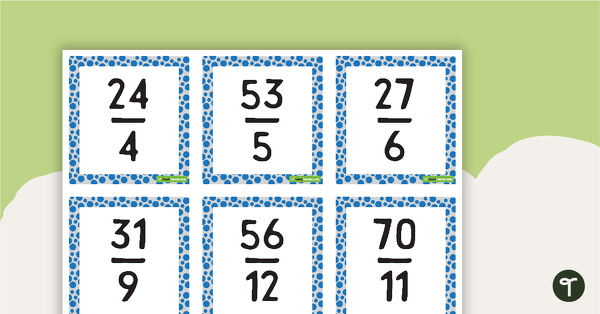
Improper Fractions Cards
A set of 30 cards displaying various improper fractions.
- Plus Plan
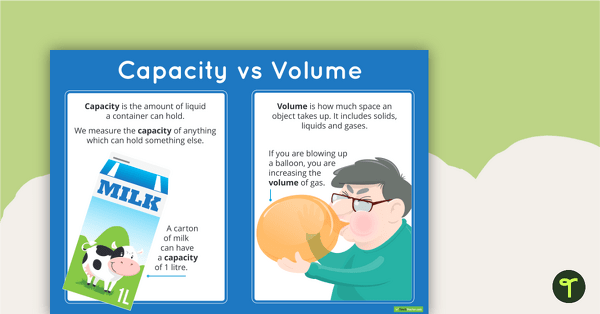
Capacity Vs Volume Poster
A poster explaining the difference between capacity and volume.
- Plus Plan
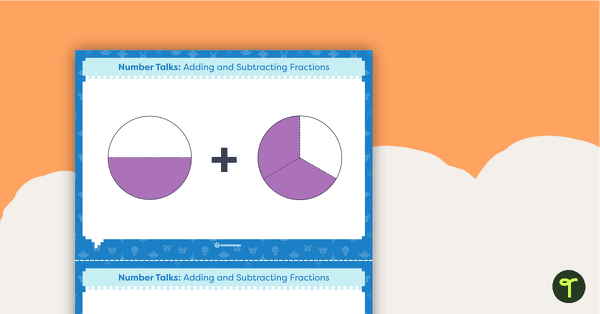
Number Talks - Adding and Subtracting Fractions Task Cards
Build fractional reasoning with this set of 24 task cards.
- Plus Plan
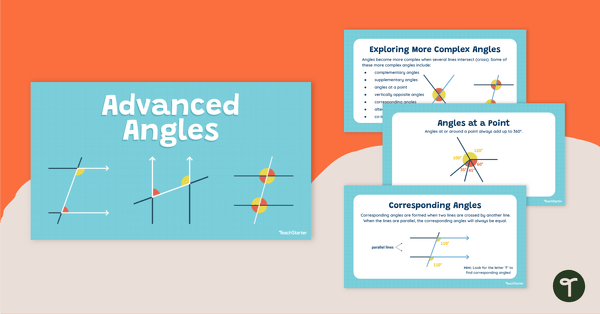
Advanced Angles Teaching Slides
Teach your students about advanced angle types with this teaching presentation perfect for upper primary school maths lessons.
- Plus Plan
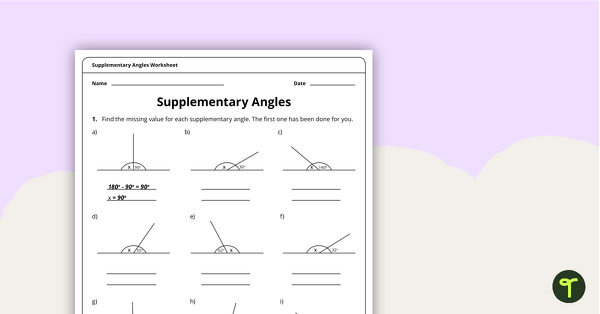
Supplementary Angles – Year 6 Maths Worksheet
Teach your students to identify and calculate supplementary angles with this one-page maths worksheet.
- Plus Plan
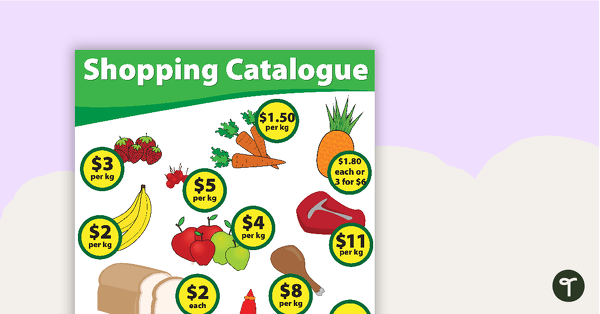
Shopping Catalogue with Worksheet
A shopping catalogue and worksheet to use when working on financial mathematics.
- Plus Plan
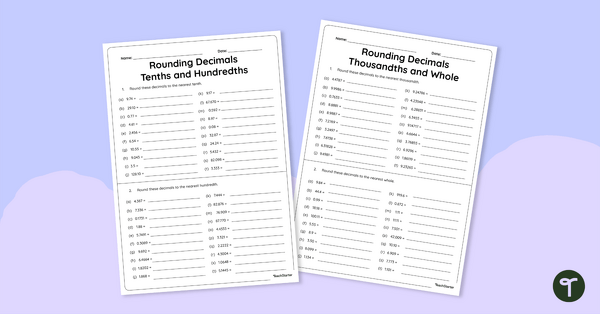
Rounding Decimals Worksheet Set
Practise rounding numbers to the nearest whole, tenth, hundredth and thousandth with this worksheet set.